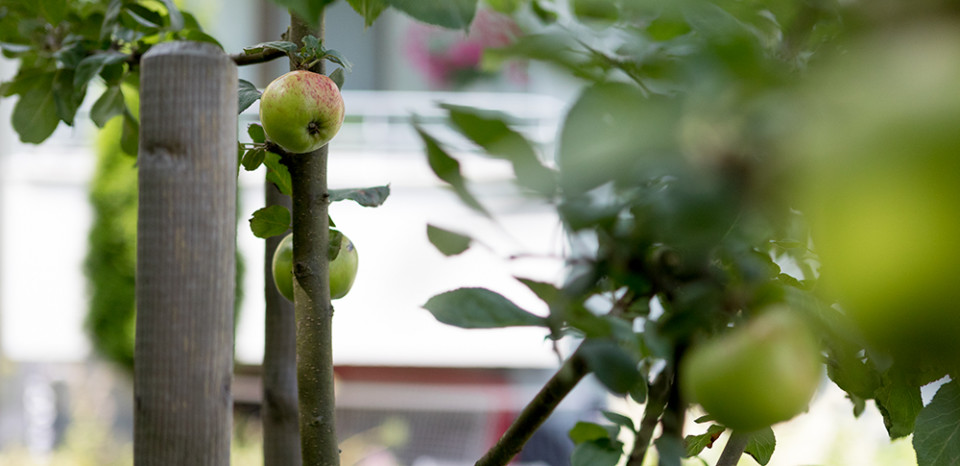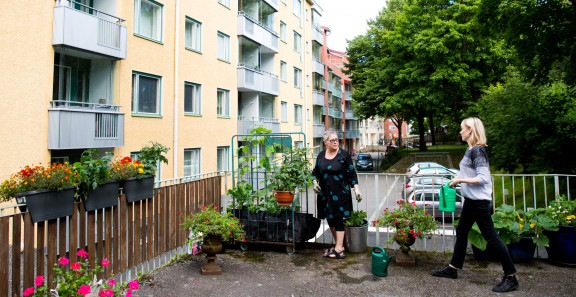Lahti, the European Green Capital 2021, is working with Sitowise to launch the Kulma project, which will develop a calculation model for assessing consumption-related emissions. The groundbreaking Kulma project will be carried out in collaboration with some of Finland’s most skilled climate experts.
Finnish municipalities are currently seeking ways to rapidly reduce their emissions as part of national efforts to achieve carbon neutrality by 2035. This objective poses many challenges, one of which is that products and services are often consumed in a different place to where they are produced. So what’s the most sensible way to calculate consumption-based emissions?
In order to resolve this issue, Sitowise is developing a new calculation model aimed at modelling consumption-based emissions at municipal level. This calculation model will provide municipalities with better information about the emissions generated by their residents’ consumption.
Although municipalities differ considerably from each other, the activities that generate their emissions are similar. Their residents have homes, use and provide services, travel and eat. This makes it possible to develop a comparable calculation model for residents’ emissions.
Suvi Monni, Leading Advisor at Sitowise

Calculation model to be designed by a network of experts
The groundbreaking Kulma project will be carried out in collaboration with some of Finland’s most skilled climate experts. This network will include a wide range of experts all the way from representatives of large municipalities and expert institutes to scientists working on climate change at universities. The expert network will meet several times during the course of the project, both to assess the calculation model and to maintain dialogue between the various sectors.
According to expert network participant Jukka Käyhkö, Professor of Geography at the University of Turku and a member of the Finnish Climate Change Panel, municipalities have made ambitious climate initiatives and are proactively launching initiatives to reduce emissions. Other actors, such as universities, have also identified a clear need to reduce their own emissions: the University of Turku has developed its own roadmap for achieving carbon neutrality. However, individuals still have insufficient tools to gain an understanding of their own emissions.
Municipalities don’t have metrics to understand their residents’ consumption. As consumption-based emissions account for up to a third of all emissions, there’s a dire need for such metrics. The tool that is now in the pipeline will provide municipalities with both this missing information and the ability to weigh up how consumer behavior could be steered in a more climate-friendly direction.
Jukka Käyhkö, Professor of Geography, University of Turku
Designing a brand-new type of calculation model also poses challenges, and identifying and solving these challenges will be part of the project. For example, how do you collate data from a variety of sources in a commensurate format regardless of which municipality wants to use the information? And are there any surprising bottlenecks or shortcomings in data collection?
“Kulma is a development project and, as the project progresses, we’ll definitely encounter unexpected issues that we didn’t consider at the planning stage. However, our expert network will enable us to effortlessly share insights and identify any areas for further development,” says Emma Liljeström, Sitowise’s Project Manager for the Kulma project.
One step closer to residents as part of Lahti’s Green Capital year
After the Kulma project, a pilot project will be launched to provide emissions calculation and a report to municipalities interested in the service. The report will be comparable, easy to internalize, and convenient to use in planning efforts to reduce emissions. The model will be updated every year to ensure that municipalities have the opportunity to understand how their residents’ consumption has changed and use this information to assess the impact of their climate measures.
Lahti, which will be the driving force of the project, has identified demand for just such a model. With Lahti being the current European Green Capital, new initiatives like Kulma have become even more topical, as curbing climate change is a joint project in which we all have our own role to play.
“One person’s emissions are minor in relation to the overall picture. However, changing our own consumer behavior can have a larger impact, as it can have an effect on our local surroundings and our own circle of family and friends. In order to bring about change, we must be able to give residents a clear picture of which choices are important for the climate,” says Elina Ojala, Environmental Director, City of Lahti.
It is exactly this kind of change that the Kulma project is helping to promote. For consumers, curbing climate change requires a broader cultural change driven by clear and graphically represented information.
“In order to influence people’s habits, we need to support their decision-making with information-based communications. The calculation model that will be created by the project is unique, as this is the first time that we’re aiming to calculate residents’ consumption-based emissions in a comparable format. We’re developing something that’s both brand new and completely different – a tool that will enable emissions from residents’ activities to be included in our calculations,” says Liljeström.
